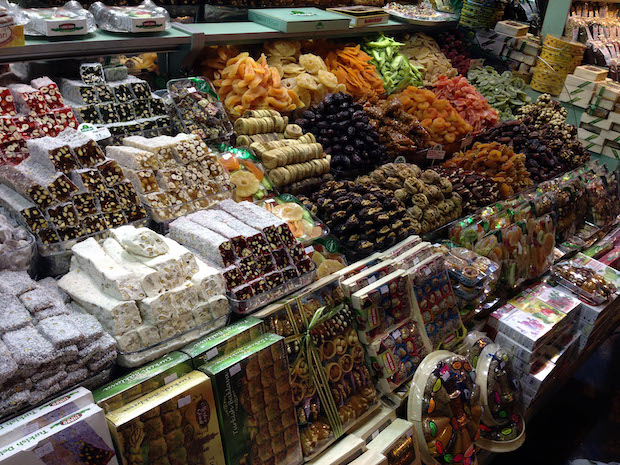On holiday I want to recharge my batteries, turn off my mobile and leave work at home. It's all about sun, books, swimming and eating. Out of summer, I enjoy short city breaks in small boutique hotels where the museums, galleries and public places are a walk away. Seville, Paris, Tallinn and Prague are great cities with good public transport - less hassle than hiring a car. Istanbul has long been a place I wanted to see, so I decided to head over and spend a few days exploring the city.

Although rich in ancient culture, Istanbul is lively, cosmopolitan and fashion-obsessed too; it has an upmarket shopping district and even its own Harvey Nichols store. It is also a great walking city, rewarding visitors with vast churches, ornate mosques, museums and Roman or Ottoman architecture. The past hits you in the face at every turn. The domed Hagia Sophia - once a church, then a mosque, now a public museum - is one of the most stunning buildings in the city. And just five minutes away is another, the Topkapi Palace, where I got a taste for the opulent lives of the Sultans, examining ancient relics of Muhammad's beard and a piece of St John the Baptist's forearm. (My husband couldn't resist emailing the Catholic Church for confirmation of this relic, but they wouldn't "confirm or deny" its authenticity.)
Istanbul is a city of surprises; I never imagined I'd be excited by a water cistern. But when I descended the steps to the Basilica Cistern, I was greeted by a vast subterranean Byzantine complex, where 300 columns form a cathedral-size 'sunken palace under the city. It's a beautiful, tranquil place beneath the vibrant city above.
The city is bustling and with that comes a lot of traffic. I avoided the chaos and jumped on the city's waterbus to Sultanahmet. It can be windy, so I sat inside with the locals drinking tea and playing backgammon. Istanbul is the only city that sits on two continents and a 10-minute ferry trip takes you from Europe to Asia and back again. The Bosphorus strait is a vibrant expanse of water where ships and boats weave around each other. I whiled away a few hours watching fisherman take their catch home.
Seafood in Istanbul deserves a special mention. I found a restaurant in a residential street in Kumkapi, a district filled with fish restaurants. Our most memorable meals were eaten in tiny, nameless restaurants that I'm sure I'd never find again. One such place was on the top floor of a modest apartment building - a glass-roofed fish restaurant, chock-full of locals, with no menu or prices. I picked out the fish I fancied and left the rest to the waiter. I wasn't disappointed. The fish was simply cooked and served with hummus and salads.
For a feast for all the senses, I ventured to the Grand Bazaar, the largest covered market in the world, with over 3,000 shops. Yes, shoppers can also do the big-name fashion labels like Prada, Armani and Vuitton in the grand 19th century arcades of the Nisantasi district but it's at the Bazaar where I convinced myself that transporting an Ottoman Chandelier with nine lamps home would be simple.
Stall holders will offer you tea but don't be afraid to haggle. When you find something you love, stop, work out what you're willing to pay and then offer way below that. And be prepared to walk away. The vendor won't want you to leave empty handed.
With my lamp bubble-wrapped in three boxes, I was amazed the airline let us carry it on. I'm forever grateful to the cabin staff who stowed my cargo with their coats. Because every time I see my very own Ottoman relic hanging above my dining table, I'm reminded of that visit to Istanbul. And that's worth every second of the haggle.